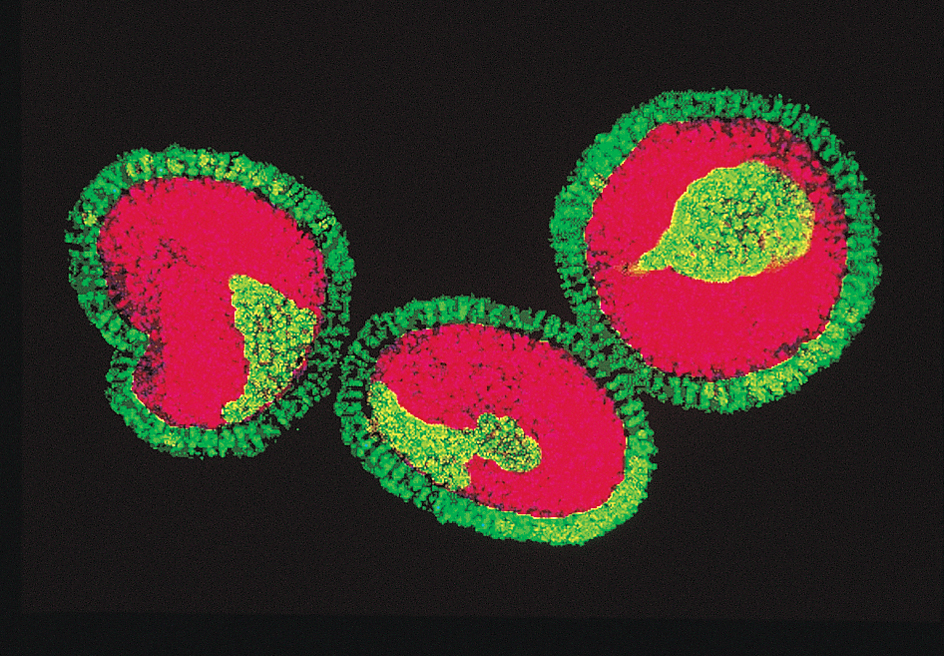Influenza is an infectious disease caused by the influenza virus. The disease is commonly called flu or grippe. The word influenza is sometimes used to refer generally to either influenza or similar illnesses. The symptoms of influenza include chills, fever, headache, body aches, and weakness. The symptoms usually disappear in about a week. The patient’s resistance may be lowered, so that secondary infections, such as bacterial pneumonia, follow. Secondary infections are common in patients with immune system disorders or older adults.

There are three main types of influenza viruses: type A, type B, and type C. Types B and C appear to infect only human beings. Type A can infect people and certain animals, such as swine. The animals may then carry and transmit the disease to human beings. Each type of influenza occurs in many varieties called subtypes. The two most common type A subtypes are called H1N1 and H3N2. Subtypes of type A or B viruses cause most epidemics of influenza in human beings.
How influenza spreads.
Influenza is mainly a respiratory disease. The virus is inhaled and comes in contact with cells of the upper air passages. It penetrates the cells that line these passages and reproduces. In time, new viruses are released from the infected cells and infect other cells along the respiratory tract. Influenza may spread deep within the lungs. The virus may also be carried away in exhaled air and infect other people. People may also become infected by touching something with the virus on it and then touching their mouth or nose.
People develop immunity or resistance to influenza when the body produces substances called antibodies, which can attach themselves to influenza viruses and prevent them from infecting cells. But the virus may change its chemical composition so that the antibodies no longer work. The cells of the body must produce new kinds of antibodies. The body also can make cells called cytotoxic T cells, also called killer T cells, that recognize and kill cells infected with influenza virus.
Prevention and treatment.
Simple hygiene practices, such as frequent hand washing, can help control the spread of influenza. However, the most effective means to prevent the spread of the disease is through vaccination. Most influenza vaccines are made from killed or weakened influenza viruses. Scientists are using genetic engineering techniques to produce better vaccines. In addition to vaccines, antiviral drugs, such as amantadine and rimantadine, are effective treatments for type A influenza infections, but not type B infections. Other drugs called neuraminidase inhibitors are effective in treating and preventing type A and B infections. Treatment of patients may include combating secondary infections, which cause most of the deaths associated with influenza. Physicians control these infections with antibiotics and other drugs.
Loading the player...How your immune system fights influenza
Flu epidemics.
Influenza tends to occur in epidemics. Each outbreak is caused by a virus slightly different from the earlier ones. Scientists often name the different strains (types) of the virus after the place where the strain was first identified. For example, A/Sydney/97 refers to a type A influenza strain that was first identified in Sydney, Australia, in 1997.
One of the worst global epidemics, called a pandemic, of influenza occurred in 1918-1919. In this pandemic, known as the Spanish flu, 25 million to 100 million people, including an estimated 675,000 Americans, died. In 1957-1958, a strain called Asian flu caused a pandemic, as did the Hong Kong flu in 1968-1969. In each instance, the pandemics have been caused by new subtypes of the type A influenza virus.
